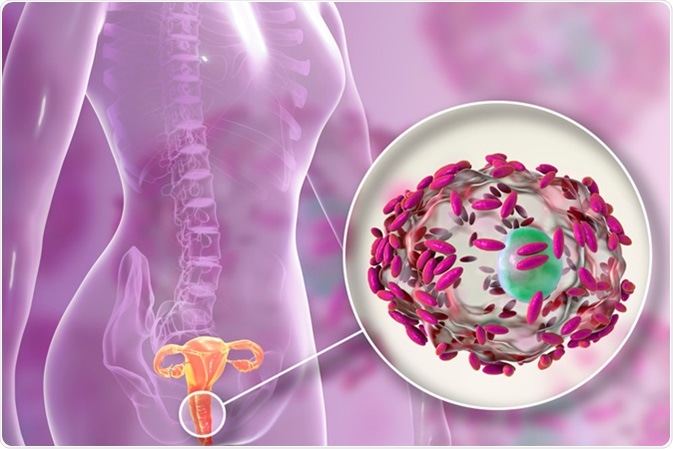
Common Triggers for Vaginal Infections
Skip to:
- What are the symptoms of vaginal infection?
- What are the consequences of vaginal infection?
- What triggers vaginal infection?
Vaginal infections are a common health problem in women. Vaginitis is the term used to denote the presence of inflammation and /or infection in the vagina. A plethora of microorganisms are normally observed in the vaginal microflora; however, Gardnerella vaginalis, Candida and Trichomonas are primarily responsible for the majority of vaginal infections in women of reproductive age.
Bacterial vaginosis (BV) and yeast infections are the most frequent causes of vaginal infection. BV is caused by Gardnerella vaginalis, Mycoplasma hominis, Mobiluncus and Prevotella and is prominent in reproductive-age non-pregnant women. Candidiasis caused by Candida, a type of yeast, is characterised by curdy or cottage cheese-like vaginal discharge. Candidiasisis is also called yeast infection. Trichomonas, a protozoon, causes vaginal infections termed trichomoniasis and is typically found in non-pregnant married women. Trichomoniasis is characterised by itching and a vaginal discharge which is profuse, yellowish-green and smelly.

Bacterial vaginosis. Vaginal secretions contain epithelial cells, so-called clue cells covered with bacteria Gardnerella vaginalis, 3D illustration Credit: Kateryna Kon / Shutterstock
Vaginal inflammation may be caused by certain non-infectious agents too. These include atrophic vaginitis, foreign body, cancer, contact dermatitis, irritants and sometimes the presence of an intrauterine contraceptive device.
What are the symptoms of vaginal infection?
Abnormal vaginal discharge, itching, a burning sensation, irritation and discomfort are some common signs of vaginal infections; however, in many cases the infection may be asymptomatic or present with few symptoms.
Among the symptoms, abnormal vaginal discharge is one of the most common and important indicators of vaginal infections. It is important to distinguish between abnormal and normal vaginal discharge for prompt diagnosis. Normal vaginal discharge is usually clear to white, non-adherent to the vaginal wall, and pooled in the posterior fornix, which is located in the posterior wall of the vagina and the cervix. It has a pH of less than 4.5 and is devoid of any offensive odor. Under the microscope, it appears to be composed of nonhomogeneous clumps of epithelial cells.
What are the consequences of vaginal infection?
Vaginal infections may cause significant health risks to the affected women if left untreated. For instance, they may lead to pelvic inflammatory disease (PID) which can cause fertility issues such as tubal infertility and ectopic pregnancy. PID may also produce adverse pregnancy outcomes such as preterm labor and low birth weight. There is also a risk of developing cervical dysplasia, postoperative infection, HIV and infection with herpes simplex virus type 1 (HSV 1) infection.
What triggers vaginal infection?
Factors that increase the risk of developing vaginal infection include:
Antibiotic use - Vaginal infections are common in women who take antibiotics. Broad-spectrum antibiotics kill a wide range of both beneficial and pathogenic bacteria. As a result, they eliminate many healthy bacterial in the vagina, allowing other harmful organisms to overgrow.
Increased estrogen levels - Yeast infections are more common in women with high estrogen levels. Pregnant women or women taking estrogen birth control pills or estrogen hormone therapy are highly susceptible to such infections.
Uncontrolled diabetes - Women with diabetes are at a greater risk of developing yeast infections. Diabetic women are also at an increased risk of developing sexually transmitted diseases; hence, they must be screened regularly and treated appropriately for the same.
Impaired immune system - Weakened immunity, which may occur with medications such as corticosteroid therapy or following HIV infection, is another reason for the development of vaginal infections, especially, yeast infections.
Vaginal atrophy – Vaginal atrophy refers to the thinning of the vaginal walls caused by decreased estrogen levels. This condition is frequently observed after menopause. It may also develop at other times of life when the body’s estrogen levels decline, such as during breastfeeding. Reduced hormone levels are responsible for vaginal thinning and dryness, which predisposes to inflammation of the vagina and vaginal infections.
Use of irritants – The use of perfumed soaps, feminine hygiene sprays, vaginal douching and copper intra-uterine contraceptive devices may cause vaginal irritation or allergy, resulting in secondary infection. Wearing tight-fitting underclothes can cause rashes and is another reason which can irritate the vagina.
pH - Lactic acid bacteria form a major part of the vaginal flora. These bacteria help to maintain the normal acidic pH of the vagina, which is a protective barrier against infection. An imbalance in this acidic environment leads to a reduction in the number of lactic acid bacteria and paves the way for the development of infection.
Vaginal infection is a bothersome condition and may cause severe discomfort and suffering to women. Women in rural areas are the most vulnerable group. Regular screening for vaginal infections in women of reproductive age is warranted. Incorrect diagnosis may lead to serious medical and social consequences which may eventually result in a decreased quality of life.
Sources
- Mayoclinic. (2018). Yeast infections (Vaginal). www.mayoclinic.org/.../syc-20378999
- Mulu, W.,et al. (2015). Common causes of vaginal infections and antibiotic susceptibility of aerobic bacterial isolates in women of reproductive age attending at Felegehiwot Referral Hospital, Ethiopia: a cross sectional study. BMC women's health,15, 42. doi:10.1186/s12905-015-0197-y
- Institute for Quality and Efficiency in Health Care (IQWiG); (2006). Bacterial vaginosis: Overview. https://www.ncbi.nlm.nih.gov/books/NBK298829/
- https://www.ncbi.nlm.nih.gov/books/n/pmh_iqwig/glossary/def-item/def93/
Further Reading
Last Updated: Jul 21, 2019





















.png)










No hay comentarios:
Publicar un comentario